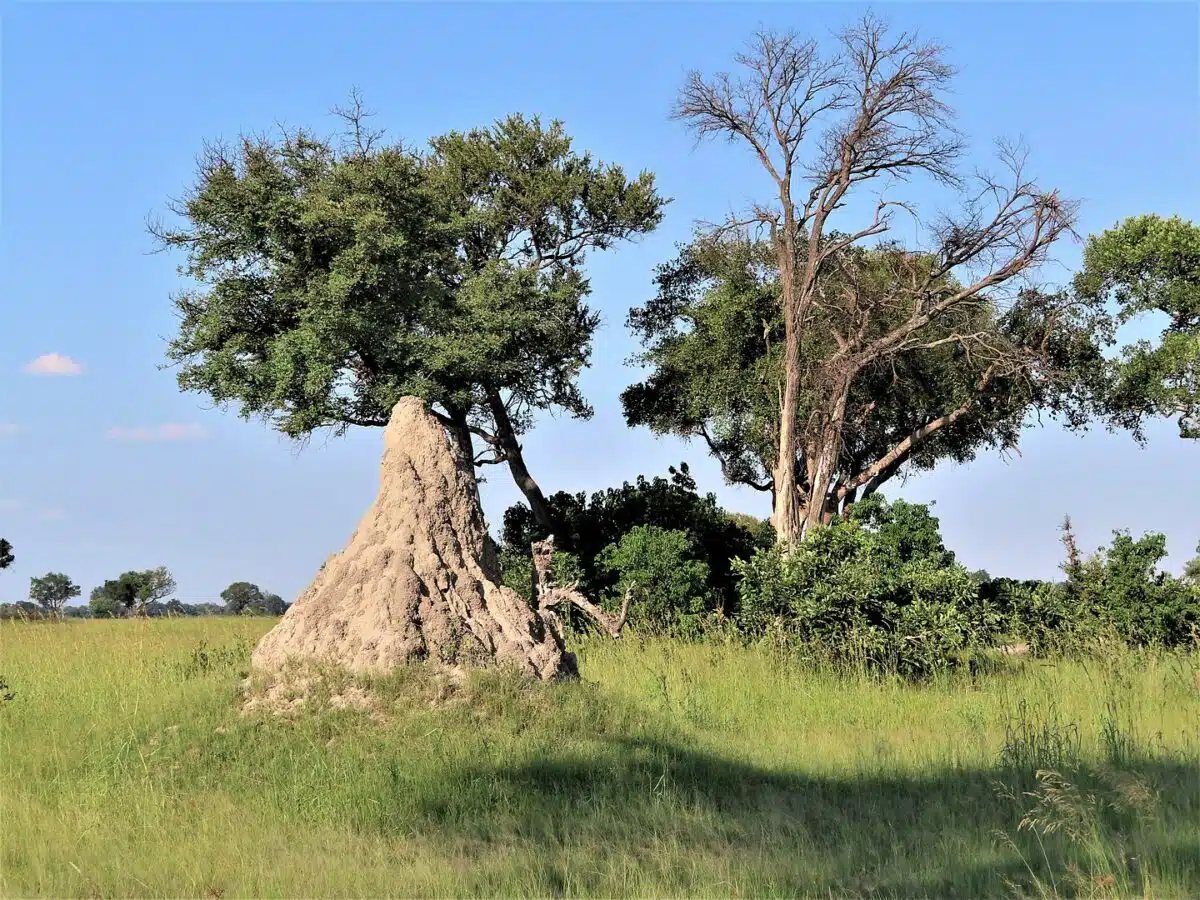The Fortress of Macrotermes Termites
The remarkable structures created by macrotermes termites represent a colony of a million individuals. Far from mere piles of earth, these termite mounds are the epicenters of extensive underground cities. Encompassing up to six kilometers of foraging tunnels, these mounds are a testament to these tiny insects’ architectural prowess and social organization.

Battling Floods with Ingenious Architecture
A fascinating aspect of these termite mounds is their response to flooding. When their colony faced the threat of being submerged, the termites retreated into their mound. As their tunnels flood and collapse, they seal themselves, preventing the floodwaters from penetrating further and forcing the water back to the surface. This natural phenomenon showcases the termites’ remarkable ability to adapt and survive in challenging environments.
The Mound: A Hub of Constant Maintenance and Rebuilding
Though fragile and made of sand, the termite mound requires continuous maintenance and rebuilding. While initially a threat, the floodwaters soften the soil, making it easier for the termites to transport and repair damaged parts of their mound.
A Keystone in Ecosystem Engineering
These mounds play a crucial role beyond their immediate inhabitants. They contribute significantly to the creation of islands vital for the wildlife of the Okavango Delta. The mounds, laden with dung, fruits, and seeds, become fertile grounds for new plant growth. Over time, they transform into lush green canopies, attracting diverse animals and contributing to the ecosystem’s overall health and diversity.
The Creation of Islands and Habitats
The raised areas around termite mounds evolve into islands, providing food, shelter, and refuge for various species, from elephants to baboons and birds. These islands, once part of a featureless desert, now number around 150,000, illustrating these tiny architects’ profound impact on their environment.
Interesting Facts About Termites
- Architectural Marvels: Termites are known for their incredible mound-building abilities. These structures can reach up to 30 feet in height and are primarily constructed for temperature control and protection against predators.
- Ecosystem Engineers: Termites play a vital role in their ecosystems. Their mounds help prevent desertification and maintain the fertility of the soil. In places like the Okavango Delta, termite mounds are essential in creating islands and habitats for other species.
- Diverse Diet: While commonly known for feeding on wood, termites have a varied diet that includes grass, leaves, and even animal dung. This diverse diet contributes to their role as decomposers in the ecosystem.
- Social Insects: They live in highly organized colonies, often consisting of millions of individuals. These colonies are divided into different castes, including workers, soldiers, and reproductive termites.
- Longevity: Some termite queens can live for decades, making them among the longest-living insects. This longevity allows termite colonies to grow and thrive over many years.
- Communication Skills: They communicate using pheromones, vibrations, and physical contact. This communication is crucial for coordinating activities within their complex societies.
- Environmental Impact: Termites are significant contributors to nutrient cycling in their environments. Their activities help break down tough plant fibers, returning essential nutrients to the soil.
- Global Distribution: They are found on every continent except Antarctica. Their ability to adapt to various environments has made them one of the most successful insect groups on the planet.
- Cultural Significance: In some cultures, termites are considered a delicacy and are harvested for food. They are also used in traditional medicine in various parts of the world
You might also enjoy:
The Best Places to See the Big 5
Scientists Discover the Bacteria Behind Elephant Fatalities
Join our Forum for free today!

- The Bond Between a Wild Baby Bison and Her Rescuer - July 20, 2024
- An Excited Husky’s First Ever Time in Snow - July 20, 2024
- Top 20 Colorful Species To Brighten Your Day - July 14, 2024


